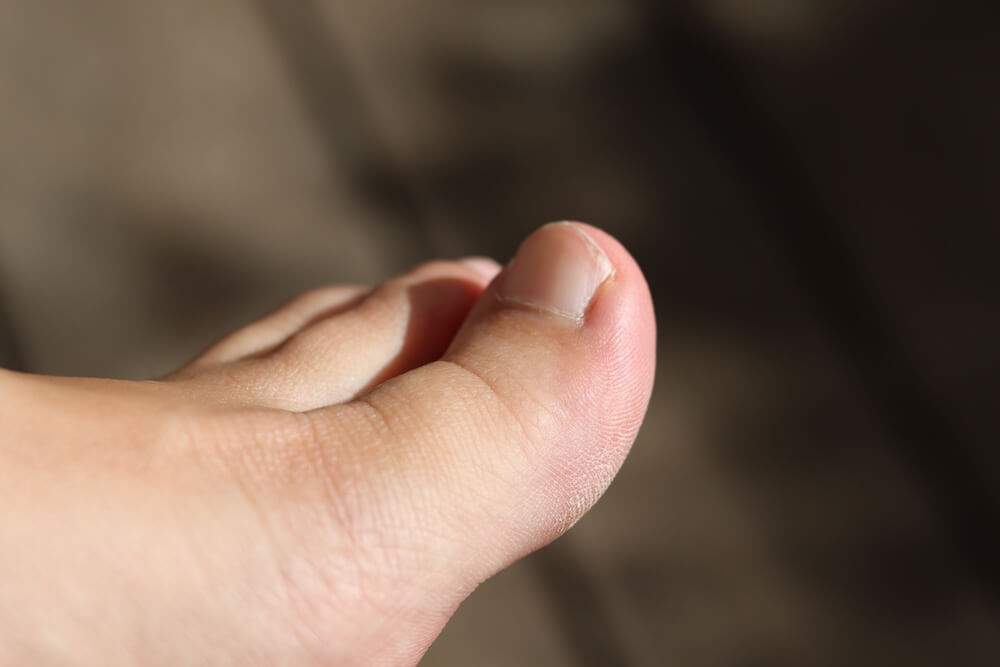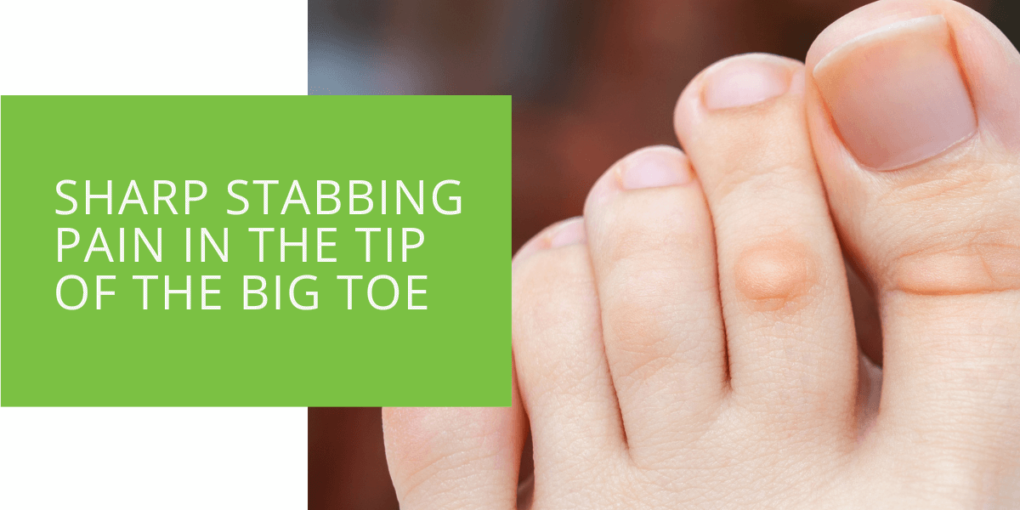Understanding Sharp Stabbing Pain in the Tip of the Big Toe
Are you experiencing sharp, stabbing pain in the tip of your big toe? If so, you know just how discomforting it can be. Your big toe is essential for balance and propulsion, so any pain or discomfort in this area can significantly impact your quality of life.
But don't worry, you're in the right place. In this comprehensive guide, we'll explore the causes of sharp pain in the big toe and provide possible solutions and treatments to alleviate the discomfort. Whether you've experienced this pain before or it's a new sensation, our guide will help you understand what's happening, why, and how to improve it. So, let's dive in and get to the bottom of this pesky problem!
Key Takeaways
- Various conditions, including gout, turf toe, arthritis, ingrown toenails, and bunions, can cause sharp, stabbing pain in the big toe.
- Proper diagnosis by a podiatrist is essential to determine the underlying cause and create a personalized treatment plan.
- Managing toe pain may involve pain relief techniques, suitable footwear, and lifestyle adjustments, all tailored to the specific condition diagnosed by your podiatrist.
Common Causes of Sharp Toe Pain
Gout
Gout is a form of arthritis characterized by the sudden and severe onset of pain. It occurs when uric acid crystals accumulate in the joints, often affecting the big toe.
The uric acid crystal buildup can lead to excruciating pain and inflammation, commonly referred to as a gout attack. This condition can occur due to genetic factors and dietary choices. The big toe is a frequent target because it's one of the body's cooler extremities, making uric acid more likely to crystallize there. Gout symptoms include intense pain, redness, and swelling at the base of the big toe. If you suspect gout, consult a podiatrist for proper diagnosis and treatment.
Turf Toe
Turf toe is a common injury among athletes, particularly those who participate in sports with frequent stop-and-go movements. It is essentially a sprain of the ligaments around the big toe joint.
This condition often occurs when athletes engage in sudden hyperextension of the big toe, like pushing off forcefully. Turf toe can damage ligaments, causing pain, swelling, and stiffness. To avoid long-term consequences, seeking immediate medical attention for diagnosis and appropriate treatment is crucial. Without proper care, turf toe can lead to chronic pain and instability in the big toe joint.
Arthritis
Arthritis, including osteoarthritis and rheumatoid arthritis, can also cause sharp pain in the big toe. These medical conditions lead to joint inflammation, deterioration, and deformity.
Osteoarthritis is typically caused by wear and tear on the joint over time, while rheumatoid arthritis is an autoimmune condition that affects multiple joints, including the big toe. Both forms of arthritis can result in pain, swelling, and stiffness in the big toe joint. Treatment options may range from medications to physical therapy and lifestyle adjustments. It's essential to consult a podiatrist for a proper diagnosis and personalized treatment plan.

Other Conditions Leading to Toe Pain
Ingrown Toenail
An ingrown toenail occurs when the nail grows into the skin surrounding the nail bed. This condition can be extremely painful and often leads to redness and swelling.
The discomfort is often caused by the nail edge digging into the soft tissue, leading to irritation and sometimes infection. Proper diagnosis and treatment by a podiatrist are essential to alleviate the discomfort and prevent complications. Ingrown toenails can worsen if left untreated, potentially requiring minor surgical procedures to correct.
Bunions
Bunions are bony bumps that develop at the base of the big toe. They can cause pain, inflammation, and deformity.
A combination of genetic factors and improper footwear often causes bunions. They lead to a misalignment of the big toe joint, pushing it outward. The resulting pressure and friction against shoes can lead to pain and discomfort. Treatment may involve footwear modifications, orthotics, or surgical intervention, depending on the severity of the condition. Early intervention is crucial to prevent further joint deformity.
Diagnosing Sharp Pain in the Big Toe
To determine the underlying cause of sharp pain in your big toe, it is crucial to consult a podiatrist. They will perform a thorough physical examination, review your medical history, and may order diagnostic tests such as X-rays or blood tests.
Physical examination involves assessing the range of motion of the big toe, checking for deformities, and identifying areas of tenderness. Diagnostic tests, such as X-rays, help visualize the bones and joints, while blood tests can be useful in diagnosing conditions like gout. Accurate diagnosis is the first step towards effective treatment. Once the cause is identified, your podiatrist can recommend the most appropriate treatment plan tailored to your condition.
Coping with Sharp Toe Pain
Managing sharp toe pain often involves a combination of strategies:
- Pain Management Techniques: Your podiatrist may recommend over-the-counter pain relievers or prescribe medications to alleviate pain and inflammation. Nonsteroidal anti-inflammatory drugs (NSAIDs) are commonly prescribed to reduce pain and swelling. Medications to lower uric acid levels may be necessary in cases of gout.
- Footwear Recommendations: Proper footwear can make a significant difference. Your podiatrist may suggest shoes that provide better support and reduce pressure on the affected area. Shoes with a wide toe box and cushioning can help relieve pressure on bunions or inflamed joints. Orthotic inserts may also be recommended to provide additional support and alignment.
- Lifestyle Adjustments: Depending on the diagnosis, you may need to make lifestyle changes, such as avoiding certain activities or adopting exercises to strengthen the affected muscles and joints. For conditions like turf toe or arthritis, physical therapy and exercises to improve joint mobility and strengthen the surrounding muscles can be highly effective. Lifestyle adjustments may include dietary changes to manage gout by reducing uric acid intake.
Conclusion
Various medical conditions, including gout, turf toe, arthritis, ingrown toenails, and bunions, can cause sharp stabbing pain in the tip of the big toe. If you experience persistent pain or discomfort in your big toe, seeking professional advice from a podiatrist is crucial. Early diagnosis and proper treatment can significantly improve your quality of life and prevent further complications.
At ePodiatrists, we specialize in diagnosing and treating various foot and toe conditions. Our experienced team is dedicated to helping you find relief from the pain in your big toe. Don't let toe pain hinder your daily activities. Contact us today to schedule an appointment and take the first step towards better foot health.
Remember, your big toe plays a pivotal role in your mobility, and it deserves expert care. We are here to provide you with the personalized attention and treatment you need to get back on your feet comfortably and pain-free.

